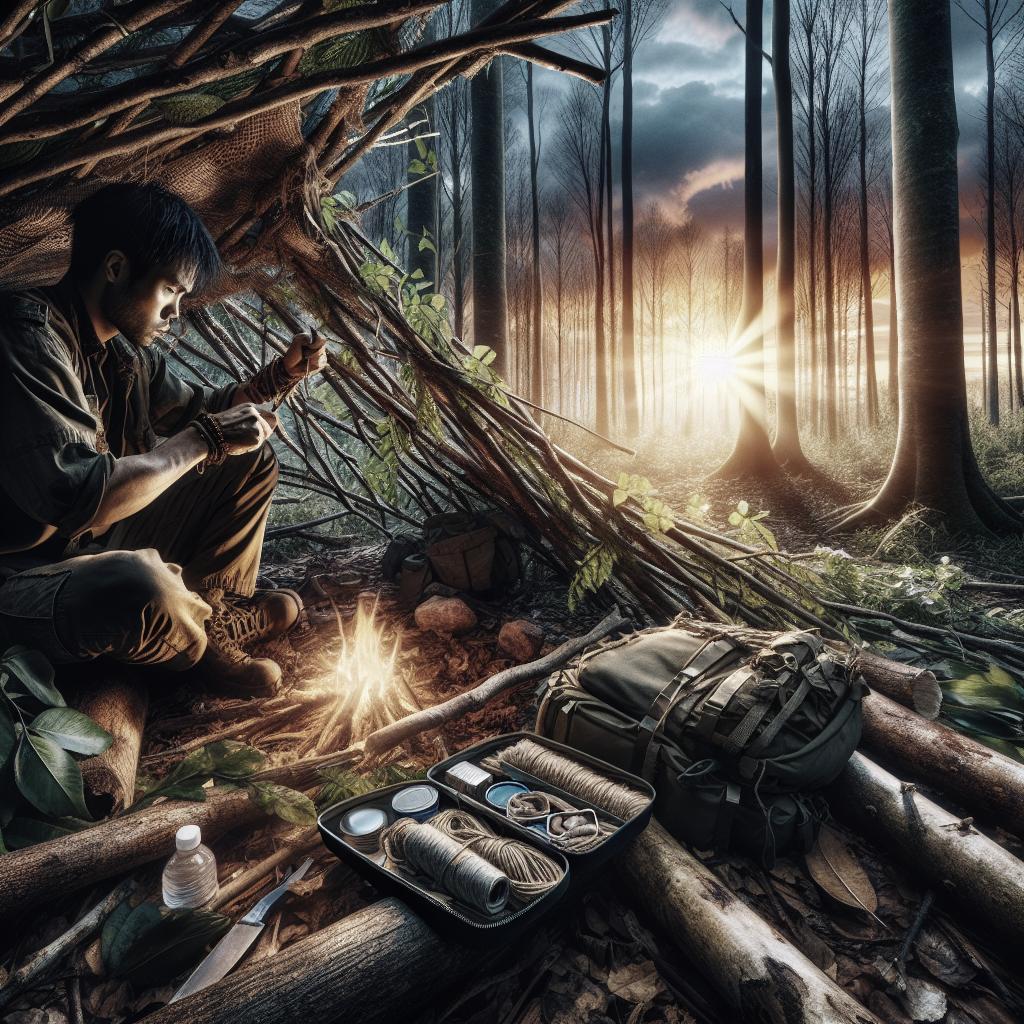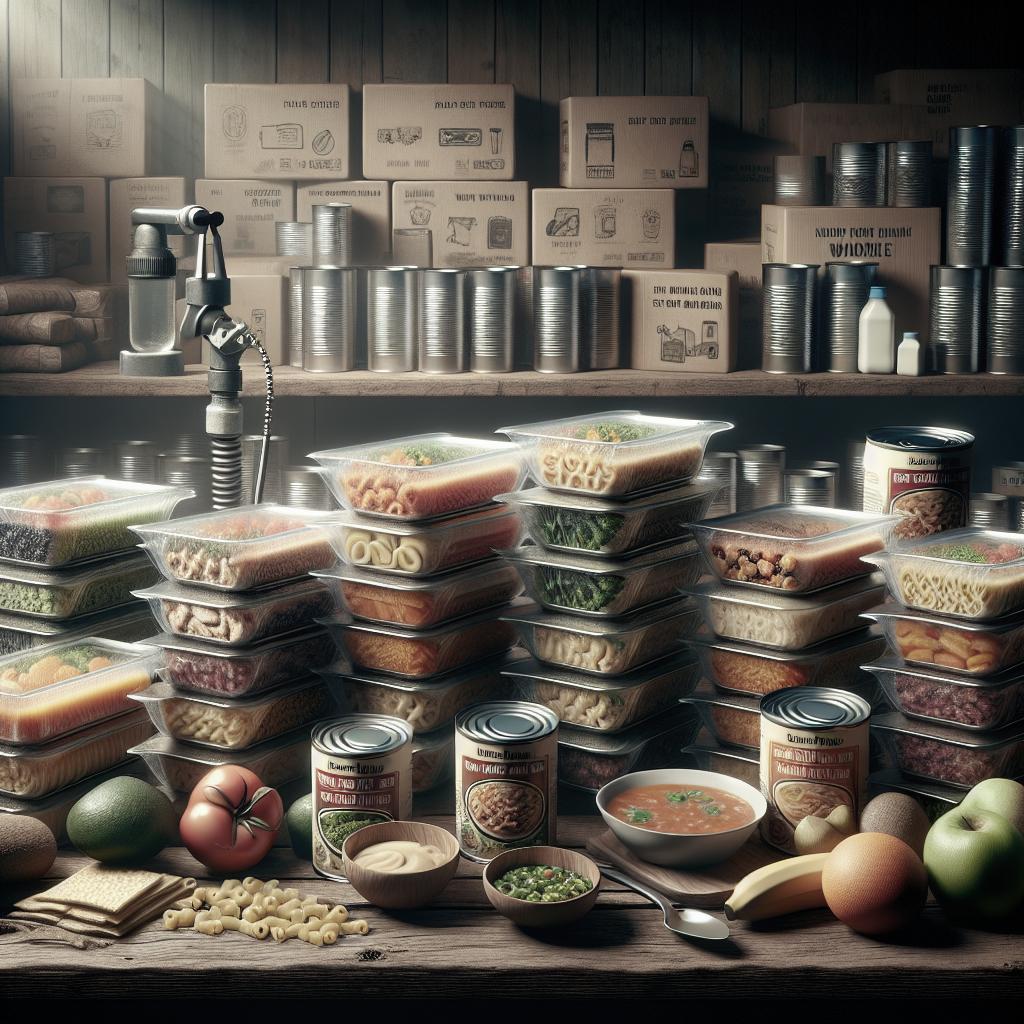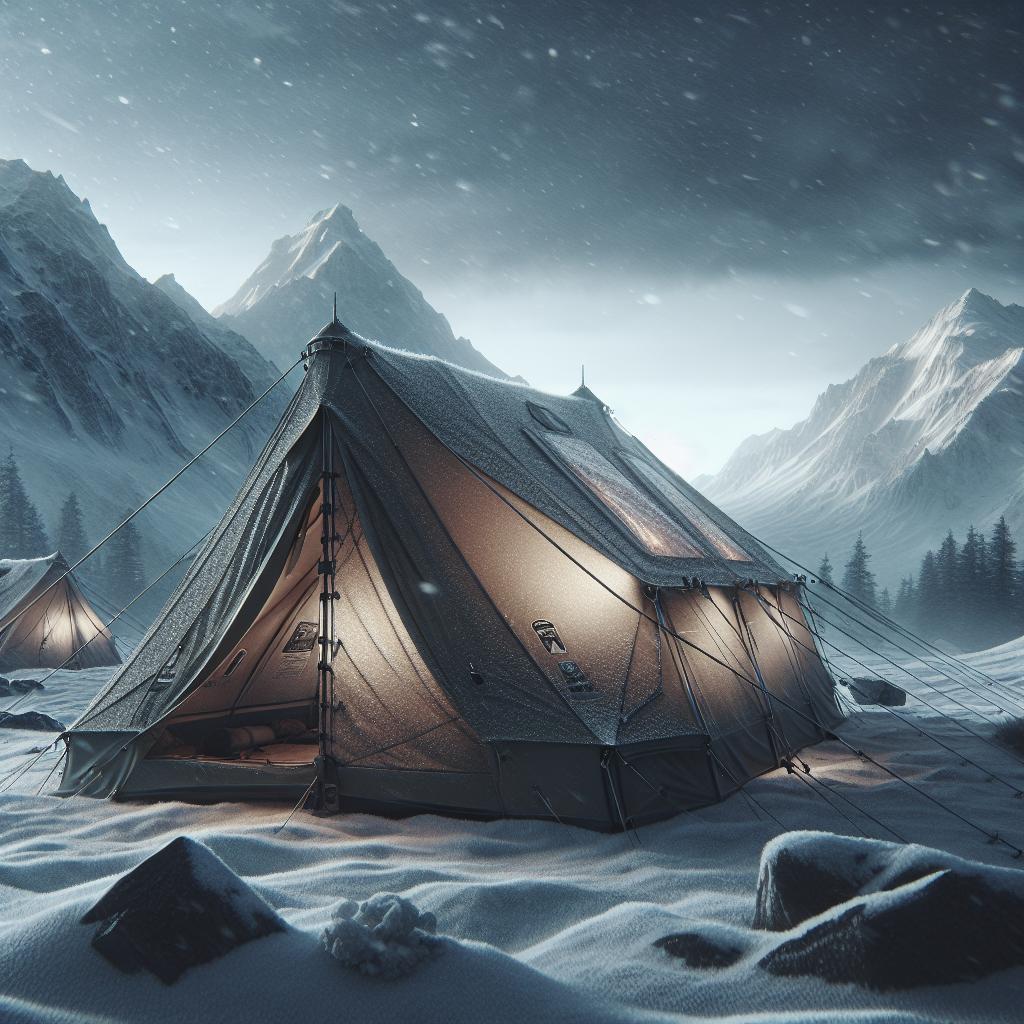<>
In the face of an unexpected wilderness adventure, preparedness can spell the difference between life and death. From building shelters and purifying water to signaling for help and navigating tough terrain, knowing what to do if stranded in the wilderness is invaluable. This blog post will delve into essential survival strategies to equip you with the knowledge and skills to stay safe. Topics include gearing up for survival with essential gear, finding and purifying water, sustaining yourself in the wild, building shelters, practicing first aid, mastering fire-building techniques, signaling for help, and staying mentally tough. By mastering these skills, you’ll be better prepared to face the unexpected and live to tell the tale of your wilderness survival.
1. Gearing Up for Survival
Playing it smart in the wild starts with what you carry. Essential items can make the difference between staying comfortable and struggling to stay alive.
Survival Kit Contents:
A well-rounded survival kit should include a multi-tool, duct tape, a whistle, a flashlight, a first aid kit, waterproof matches, and high-energy snacks. Compiling these items ensures you have the basic tools needed for handling various survival scenarios. Emergency blankets and a compact water filter are also critical additions. While space is limited, optimizing these essentials prioritizes your safety and well-being.
Water Purification Methods:
In the wilderness, water sources can often be contaminated. Methods for purification include boiling, using iodine tablets, or employing a portable water filter. Boiling water for at least one minute is a simple yet effective method to kill pathogens. Iodine tablets are a lightweight option for chemical purification and are highly effective. A portable water filter, on the other hand, can provide immediate access to clean drinking water without waiting. Knowing these methods ensures that hydration doesn’t become a dangerous guessing game.
Navigation Tools:
Carrying a map and compass is fundamental, even in this digital age. While GPS devices and smartphone apps are great, batteries can die, and technology can fail. Understanding how to read a map and navigate using a compass fosters a foundational skill set critical for finding your way to safety. Additionally, a GPS device can still be a beneficial backup, offering coordinates for your location and helping plot a path out of the wilderness.
2. Sustenance in the Wild
Maintaining your strength and energy levels is crucial when you’re stranded. Knowledge of hydration and food sources keeps you functioning optimally.
Maintaining Hydration:
Water is a quintessential element for survival. Besides utilizing purification methods to make natural water sources drinkable, it’s advantageous to know how to locate water. Look for signs such as lush vegetation or animal tracks heading downhill. Collect rainwater if possible, using leaves, tarps, or any containers you might have. Remember, staying hydrated is key to keeping your body running efficiently and keeping your mind sharp.
3. Building a Shelter
Building an adequate shelter shields you from harsh weather and potential dangers while increasing your chances of surviving the wilderness.
Where to Build:
Choosing the correct spot for your shelter is step one. Avoid low-lying areas where water may collect and cold air might settle. Find a location with natural windbreaks such as large rocks or dense foliage and ensure it’s a safe distance from hazards like falling branches or wildlife paths. Once the location is chosen, construct a lean-to with sturdy branches and foliage to insulate from the cold. Properly building your shelter helps conserve your energy for other critical survival tasks.
4. Wilderness First Aid Skills
The ability to treat injuries promptly and accurately is critical as small issues can escalate quickly in the wild.
Handling Common Wilderness Injuries:
Cuts, scrapes, and burns are commonplace in the wilderness environment. Carrying a first aid kit with antiseptic wipes, bandages, and burn ointment is key. For cuts and scrapes, cleaning the wound and applying a bandage prevent infection. Burns should be cooled with water, never ice, and covered with a sterile dressing. Sprains can be managed by resting, icing, compressing, and elevating the injured part. Being knowledgeable about using the contents of your first aid kit ensures you’re prepared to manage injuries effectively.
5. Fire Building Techniques
Building a fire is an essential survival skill that provides warmth, a means to cook food, and a method of signaling for help.
Using Fire for Survival:
To build a fire, gather dry wood and kindling. Start with small twigs and use a firestarter like waterproof matches or a ferro rod. Gradually add larger pieces of wood once the fire catches. Fire serves multiple purposes: it keeps you warm, deters predators, and can be used to boil water for purification. Furthermore, the smoke can serve as an effective signal for rescuers. Mastering the skill of fire-building significantly enhances your survival odds.
6. Signaling and Communication
Once you’re in a manageable situation, effectively signaling for help brings you closer to rescue. Creating noticeable signals, like a large SOS sign with rocks or logs, increases visibility from the air. A whistle can alert those nearby, while a flashlight can signal at night. Utilizing these tools improves your chances of being found by rescue teams. Remember, three of anything—a whistle blow, a fire, or a flash of light—is an internationally recognized distress signal.
7. Mental Toughness and Resilience
Surviving in the wilderness is as much a mental challenge as it is a physical one. Staying calm and maintaining a positive attitude is crucial. Mental resilience helps you think clearly and make rational decisions. In moments of doubt, focus on small tasks to regain a sense of control and progression. Recognizing your emotional state and practicing mindfulness can reduce panic and boost your ability to handle the situation.
8. Navigating the Terrain
Understanding the landscape and efficiently moving through it can significantly impact your survival. Using topographical maps, familiarize yourself with natural landmarks to guide your path. Always aim for higher ground if you seek a clearer view of your surroundings, and avoid areas that may be prone to flooding. Recognize patterns in the terrain to locate water sources and potential routes to safety. Being adept at reading the environment ensures you remain oriented and focused on your destination.
Becoming Always Ready
Preparation is key to transforming an unmanageable ordeal into a survivable experience. Continuously building your knowledge and skills in these survival techniques equips you for unforeseen wilderness encounters. Practice regularly, update your survival kit, and stay mentally prepared. By doing so, you foster a mindset that is both proactive and resilient, enhancing your readiness for any situation the wild throws your way. “`
| Section | Key Points |
|---|---|
| Gearing Up for Survival | Contents of a survival kit, water purification methods, navigation tools. |
| Sustenance in the Wild | Maintaining hydration. |
| Building a Shelter | Where to build a shelter. |
| Wilderness First Aid Skills | Handling common injuries such as cuts, scrapes, burns, and sprains. |
| Fire Building Techniques | Using fire for warmth, cooking, and signaling for help. |
| Signaling and Communication | Creating visible and audible distress signals. |
| Mental Toughness and Resilience | Staying calm, positive attitude, managing emotional state. |
| Navigating the Terrain | Using maps, landmarks, and understanding landscape. |
| Becoming Always Ready | Continuous practice, updating survival kit, mental preparation. |
“`


